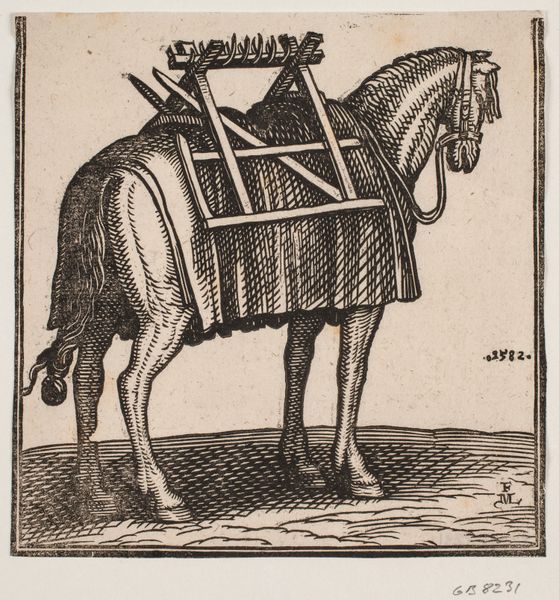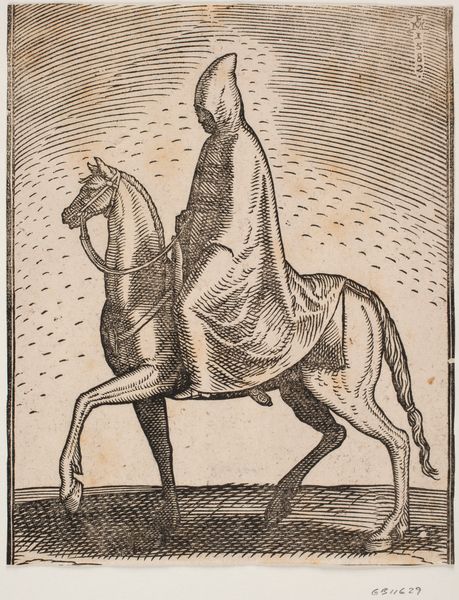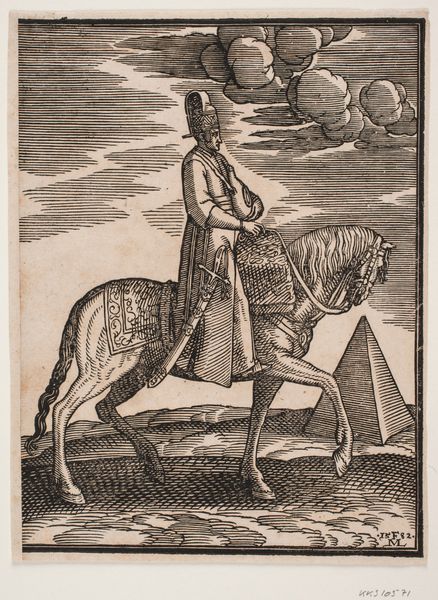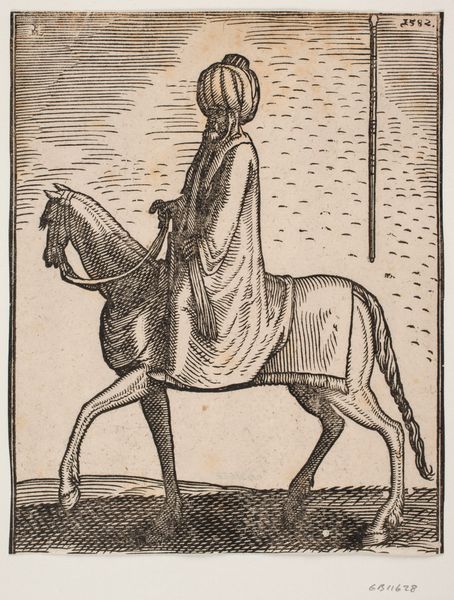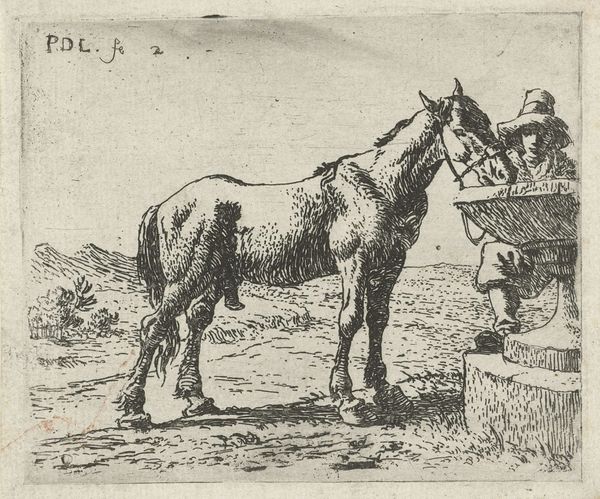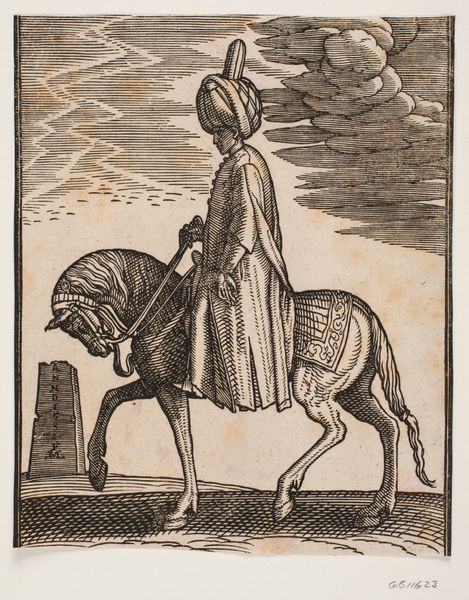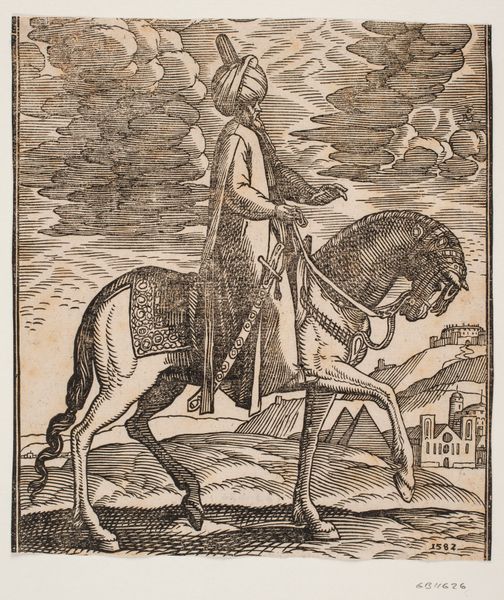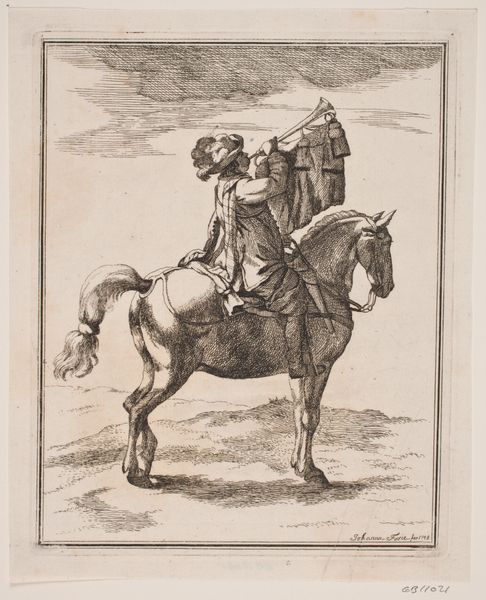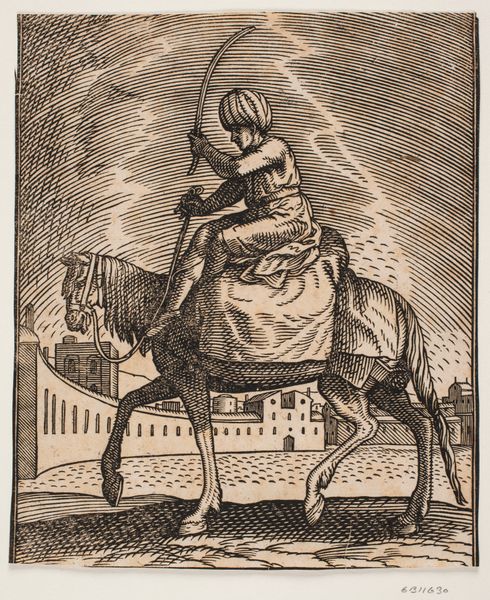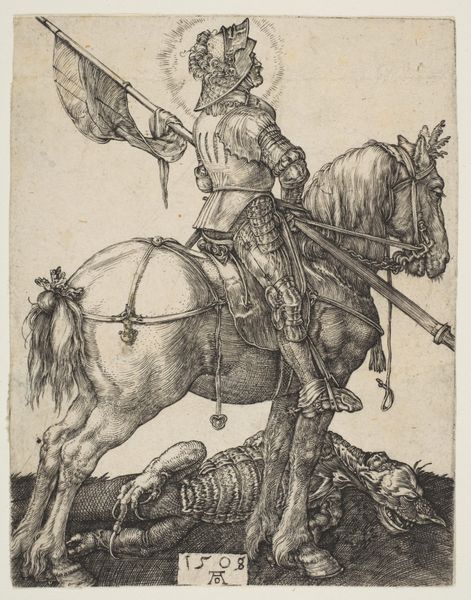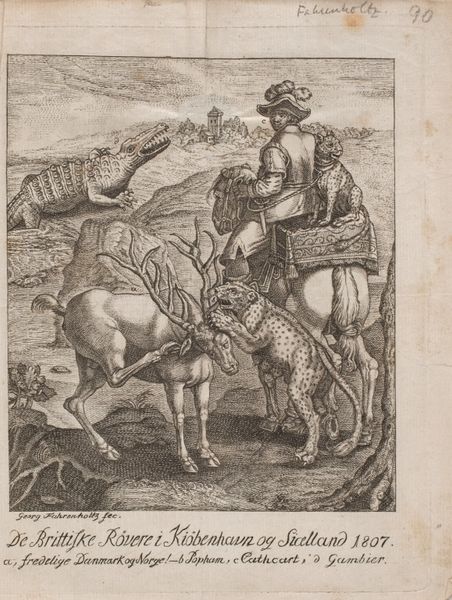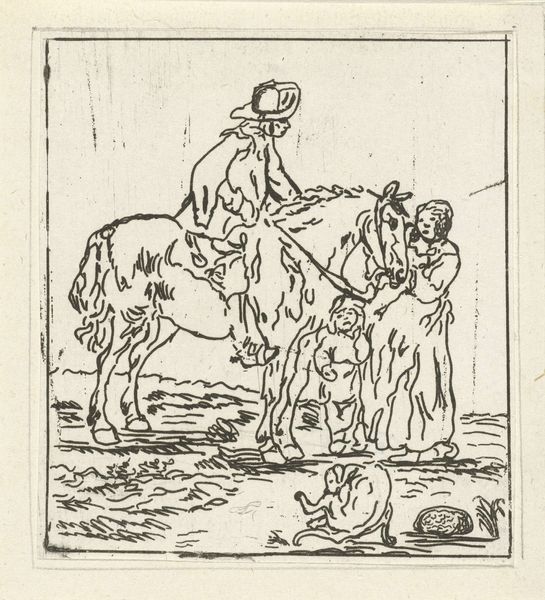
Rytter med hætte trukket ned over ansigtet; på hver af hestens sider en tremmekasse, hvori der sidder et menneske; profil mod v.; under hesten ses et ruineret, cylindrisk tårn 1582
0:00
0:00
drawing, print, woodcut, engraving
#
portrait
#
drawing
#
ink drawing
#
medieval
# print
#
landscape
#
figuration
#
11_renaissance
#
woodcut
#
history-painting
#
engraving
Dimensions: 168 mm (height) x 146 mm (width) (bladmaal)
This is a woodcut made by Melchior Lorck in 1582, depicting a horseman with a hood, riding with two people caged on either side of the horse. The ruined tower beneath the horse evokes a sense of desolation, a motif that transcends time. Cages evoke confinement, reappearing throughout history as symbols of restriction, from ancient Roman displays of captured peoples, to contemporary political images of oppression. Consider how the cage transforms: initially a practical tool, it evolves into a potent symbol, laden with psychological weight. It embodies fear and helplessness. Notice how the faceless rider contrasts with the vulnerability of the caged figures, and how this resonates with our deepest fears of anonymity and powerlessness. It is not merely an image but a mirror reflecting the cyclical nature of human experience, where motifs of ruin and captivity resurface, echoing through the corridors of time.
Comments
No comments
Be the first to comment and join the conversation on the ultimate creative platform.
